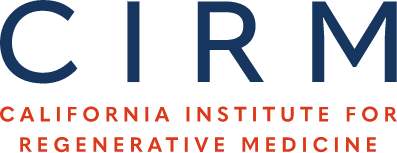Stem Cell Tourism

Many stem cell clinics, both in the United States and in other countries, advertise cures for a price. Understand the concerns over stem cell tourism and what CIRM is doing to bring real cures to patients who need them.
What is stem cell tourism?
There are growing numbers of clinics that have begun advertising unproven therapies at great cost to the patient and at great profit to the clinic this is what’s referred to as stem cell tourism. But a closer look will often reveal no information about what type of stem cells are being offered. These predatory clinics also rely heavily on video testimonials from people soon after the stem cell injections, but little information about how those people fared long-term.
How have organizations such as CIRM increased awareness for stem cell tourism?
At the 2010, meeting of the International Society for Stem Cell Research (ISSCR) in San Francisco, CIRM co-hosted a panel in which the world’s top experts discussed the steps leading to a stem cell therapy, and concerns about stem cell tourism. At that panel, the ISSCR previewed their new web site designed to help patients and their families assess international clinics advertising stem cell cures. CIRM is also one of 13 organizations who issued a joint advisory on stem cell tourism, which addresses questions about how to identify regulated stem cell clinical trials.
Patient Advisory for Stem Cell Therapy and Medical Tourism
As stakeholders in cellular therapy, the undersigned professional organizations believe it is necessary to share the following important message with patients and families contemplating cell therapy or experimental stem cell procedures. In this document, best practices are outlined to assist patients and family members in their healthcare decisions. Controlled innovation in the context of patient safety is paramount as potential therapeutic products or procedures are researched, tested, advanced and proven. Our organizations have received questions and concerns from patients and this document presents an opportunity to address them.
Advancement of clinical therapies is best done in the setting of rigorous and formal clinical trials and in a structured regulatory framework. This helps assure that safety considerations, professional peer review, and the management of patient rights and obligations are considered and addressed. Some procedures would be considered standard of care, because scientific studies have shown that they are safe and effective. Not all procedures offered to patients in all regions of the world are tested in this manner and not all geographical regions have regulations for cellular therapies or patient protection. Additionally, it is possible that some practitioners may offer stem cell procedures without following the existing regulations. Patients may be seeking treatment for incurable, potentially untreatable diseases and may be susceptible to false promises or may not have access to all of the information needed to make this important decision. As patients and families contemplate voluntarily accepting new procedures, some of which may be unproven or experimental, they should consider the following key points.
- Educate themselves on the specific treatment. This includes all costs, potential risks, potential benefits and expected outcomes. A single stem cell treatment will not work on a multitude of unrelated diseases or conditions. Thus, it is unlikely that a single cell type can be used to treat a multitude of unrelated diseases that involve different tissues or organs. Patients should beware of clinics that offer treatments with stem cells that originate from a part of the body that is different from the part being treated.
- Ensure that any treatments offered are explained fully in an “informed consent document.” This is especially important for treatments offered outside the protection of regulated clinical trials and human research subjects protection committees.
- Ask for written informed consent. As part of the informed consent process, the treatment explanation should include the success or failure rates for patients previously treated, all potential risks, alternatives to treatment, and expected outcomes. This information should be written in a manner that the patient or family member can understand.
- Have the opportunity to ask questions and have them answered adequately as part of the informed consent process.
- Be informed of appropriate clinical trials for an opportunity to participate when they become open for enrollment. Controlled clinical trials are performed to evaluate new therapies and collect patient response data. The data is then analyzed to determine whether the treatment was successful. Follow up after treatment is also important because side effects may occur much later after some cell therapy treatments, sometimes referred to as “after effects”.
- Specific things to look for in a clinical trial:
- Approval from FDA or similar country-specific regulatory agencies.
- Peer-reviewed publications demonstrating pre-clinical safety and efficacy in support of the clinical trial. Peer reviewed publications are articles in professional journals that are only accepted after appropriate review by expert professionals in the same field.
- Review and approval by an independent Ethics Committee (or Institutional Review Board (IRB) as referred to in the United States). A copy of this approval should be available to patients. Ethics Committees or IRBs review clinical trial research on humans at a treating facility, clinic, or hospital setting to assure that the research is ethical and that patients are protected.
- Disclosure of the investigator or person offering the treatment. This disclosure should include any possible conflicts of interest or financial benefit.
- Ask about the treatment procedure steps and how patient follow up is handled. The follow up process should be outlined exactly so that patients know what to expect and who to contact if they have questions or concerns after the treatment procedure.
- Ask about reporting the treatment results and outcomes. Practitioners who administer cell therapy and stem cell treatments and who desire to advance the field will be collecting data on their patients and sharing it with others in the field for peer reviewed analysis. The follow up should include details about reporting the results of every patient’s treatment.
- Obtain a disclosure of all potential expenses related to the therapy as well as who pays for any follow up or complications after the treatment.
- Association for the Advancement of Blood & Biotherapies (AABB): How Are Stem Cells Regulated
- AABB: Considerations for Healthcare Consumers
- International Society for Cell & Gene Therapy (ISCT): “Cell Therapy Medical Tourism: Time for action”
- International Society for Stem Cell Research (ISSCR): Patient Handbook
- ISSCR: Nine Things to Know About Stem Cell Treatments
- U.S. Food & Drug Association (FDA): Important Patient and Consumer Information About Regenerative Medicine Therapies
- National Institutes of Health (NIH): Stem Cells Information
- Clinicaltrials.gov
- Association for the Advancement of Blood & Biotherapies (AABB)
- American Association of Tissue Banks (AATB)
- American Society for Transplantation and Cellular Therapy (ASTCT)
- American Society of Gene and Cell Therapy (ASGCT)
- American Society of Hematology (ASH)
- California Institute for Regenerative Medicine (CIRM)
- Foundation for the Accreditation of Cellular Therapy (FACT)
- Genetics Policy Hub (GPH)
- International Council for Commonality in Blood Banking Automation (ICCBBA)
- International Society for Cellular & Gene Therapy (ISCT)
- International Society for Stem Cell Research (ISSCR)
- Society for Immunotherapy of Cancer (SITC)
- Stem Cell Donors Australia
SB 512
In 2017 CIRM partnered with California State Senator Ed Hernandez (D-West Covina) to create a new law that attempts to address the issue. The bill, SB 512, requires medical clinics whose stem cell treatments are not FDA approved, to post notices and provide handouts to patients warning them about the potential risk.
Find out More:
Public Forum: A Dose of Reality on Alternative Stem Cell Treatments
What you don’t know can hurt you
On June 15, 2010, the International Society for Stem Cell Research (ISSCR) in partnership with CIRM presented a public forum on the responsible path for delivering stem cell therapies to the clinic. The forum was moderated by Rachel Myrow, a host and reporter at KQED radio. Myrow was introduced by Don Gibbons, CIRM’s Chief Communications Officer. The forum took place at Yerba Buena Center for the Arts in San Francisco, California. The panel speakers included:
Tim Caulfield, LLM
Health Law Institute, University of Alberta
Claude Gerstle, MD
Ophthalmologist and Advocate
Jeanne Frances Loring, PhD
Professor & Founding Director, Center for Regenerative Medicine at the Scripps Research Institute
Doug Sipp
RIKEN Center for Developmental Biology
Deepak Srivastava, MD
Director, Gladstone Institute of Cardiovascular Disease
Distinguished Professor in Pediatric Developmental Cardiology, University of California, San Francisco



